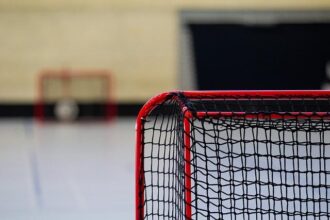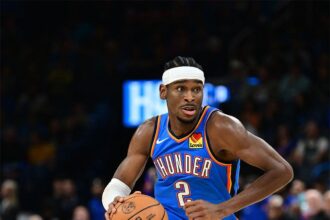In their third preseason outing, the Orlando Magic delivered a commanding performance against the Miami Heat, showcasing a dominant presence on the glass that set the tone early and carried throughout the game. As the Magic flexed their rebounding muscles, several key takeaways emerged that paint an encouraging picture for the team’s prospects heading into the regular season. This article breaks down three critical insights from the matchup, highlighting how Orlando’s physicality and strategic adjustments could shape their future success.
Magic’s Interior Dominance Sets Tone for Future Matchups
Orlando’s big men commanded the paint from the opening tip, establishing a physical presence that the Heat struggled to counter. The Magic’s aggressive positioning and timely rotations led to a staggering 16 offensive rebounds, giving them countless second-chance opportunities and disrupting Miami’s defensive flow. This interior control wasn’t just about size-it was about effort and communication, as the Magic actively boxed out and anticipated missed shots with precision. Their dominance on the glass translated into a clear advantage in possessions and ultimately helped tilt the pace in Orlando’s favor throughout the game.
Looking ahead, this performance sets a blueprint for how the Magic can approach matchups against more athletic teams. By focusing on winning the rebounding battle, they can control tempo and wear down opposing defenses. Key contributors like Wendell Carter Jr. and Mo Bamba showed improved versatility, seamlessly switching from defensive rebounds to quick outlet passes that ignited fast breaks. This synergy inside the paint may well become the defining edge for Orlando this season, turning an often-overlooked aspect of the game into their greatest strength.
| Player | Rebounds | Offensive Rebounds | Blocks |
|---|---|---|---|
| Wendell Carter Jr. | 12 | 6 | 3 |
| Mo Bamba | 10 | 5 | 4 |
| Markelle Fultz | 5 | 2 | 0 |
- Consistent physicality: The team’s interior toughness set an early tone for intensity.
- Improved communication: Defensive coordination led to fewer missed box-outs.
- Transition impact: Rebounds quickly turned into fast break opportunities.
Orlando’s Rebounding Strategy Unlocks Second-Chance Opportunities
The Magic showcased a relentless approach on the boards last night, converting defensive stops into valuable second-chance points. Their forwards and guards worked in seamless harmony, boxing out effectively while aggressively pursuing rebounds. This hustle not only disrupted the Heat’s offensive rhythm but also gifted Orlando extended possessions, crucial in maintaining their dominance throughout the game. The team’s communication and anticipation stood out, with players like Wendell Carter Jr. and Jalen Suggs consistently positioning themselves to snatch critical rebounds at pivotal moments.
Key elements of their rebounding success included:
- Persistent box-outs limiting opponents’ second opportunities
- Swift transition from defensive rebounds to fast-break offense
- Collective team effort ensuring no easy put-backs for the Heat
This strategy translated into a measurable edge, as evidenced by Orlando pulling down 18 offensive rebounds, directly leading to 12 second-chance points. Such effective glass cleaning was a defining factor in the Magic’s ability to control the pace and output against a gritty Miami squad.
| Player | Rebounds | Second-Chance Points Created |
|---|---|---|
| Wendell Carter Jr. | 9 | 5 |
| Jalen Suggs | 7 | 4 |
| Mo Bamba | 6 | 3 |
Key Adjustments Recommended to Sustain Physical Edge Throughout Season
Maintaining the physical edge that propelled the Magic to dominate the boards against the Heat requires focused strategic tweaks as the season progresses. One key recommendation centers on managing player workloads effectively, ensuring starters remain fresh while bench players are strategically integrated to sustain high energy levels. Additionally, the coaching staff should emphasize enhanced recovery protocols and nutrition plans that target endurance and muscle resilience, key factors in out-rebounding opponents consistently.
Beyond physical conditioning, smarter in-game choices must complement the hustle on the glass. Here are important focus areas:
- Rotational adjustments: Optimizing minutes to maintain intensity without sacrificing defensive cohesion.
- Defensive positioning drills: Sharpening situational awareness to better anticipate rebounds and box out threats.
- Communication enhancements: Encouraging vocal leadership on the court to coordinate efforts and prevent easy put-backs.
| Adjustment Focus | Expected Outcome |
|---|---|
| Workload Management | Consistent Energy Levels |
| Recovery & Nutrition | Enhanced Endurance |
| Rotational Defense | Better Matchups & Stamina |
| Communication | Improved Team Coordination |
In Conclusion
As the Orlando Magic continue their preseason campaign, their dominant performance on the boards against the Miami Heat underscores a promising area of strength heading into the regular season. With rebounding proving a key factor in their victory, the team appears poised to build on this foundation. While questions remain in other aspects of their game, the lessons from this third preseason outing provide valuable insights for Magic fans and analysts alike as the franchise looks to make strides in the months ahead.














